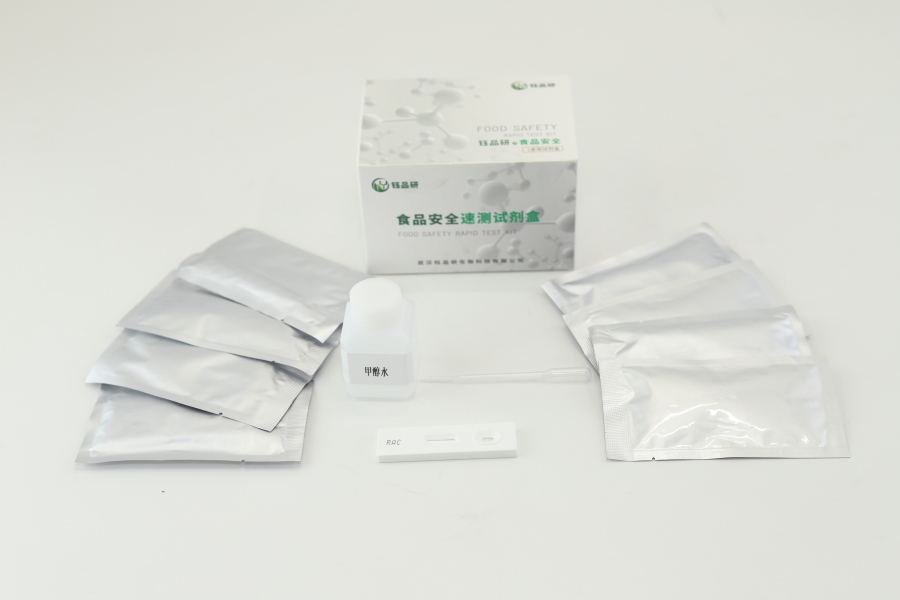
neonicotinoids, as a class of highly effective and broad-spectrum insecticides, have been widely used in agricultural production, effectively controlling a variety of pests and ensuring the yield and quality of crops. Amidacloprid and imidacloprid are representative members. They play an excellent insecticidal effect by acting on the insect nervous system, and are widely used in rice, vegetables, fruit trees and other crops.
However, with the extensive use of neonicotinoids, their residues in agricultural products are also increasingly concerned. Although these pesticides have lower mammalian toxicity than traditional pesticides, long-term intake of trace residues may still pose a latent risk to human health, and may also have adverse effects on non-target organisms such as pollinators in the ecological environment. Therefore, strict and efficient detection of neonicotinoid pesticide residues such as amidacloprid and imidacloprid in agricultural products is a key link to ensure food safety and public health.
amidacloprid, as a chlorinated nicotinoid insecticide, has contact, gastric toxicity and strong osmotic effects. It has a long effective period and is mainly used for the control of piercing-sucking oral pests such as aphids, whiteflies, and leafhoppers. Its residue detection in a variety of fruits and vegetables is an important item in food safety monitoring. Imidacloprid also has the characteristics of high efficiency, low toxicity, and broad spectrum. It has special effects on piercing-sucking pests and is widely used around the world. Its residue detection is essential to ensure the quality and safety of agricultural products.
In order to effectively monitor the residues of neonicotinoids such as amidacloprid and imidacloprid in agricultural products, it is essential to establish a fast, accurate and convenient detection method. Traditional instrument detection methods such as high performance liquid chromatography (HPLC), gas chromatography-mass spectrometry (GC-MS), etc., although they have high accuracy and good sensitivity, they usually require professional operators and expensive instruments and equipment. The detection cycle is long, which is difficult to meet the needs of rapid on-site screening and rapid detection of large quantities of samples.
In this context, rapid detection technology came into being. Among them, rapid detection reagents based on antigen-antibody reaction such as immunochromatography colloidal gold method have been widely used in grass-roots testing institutions, agricultural product production bases, market supervision and other fields because of their advantages such as simple operation, fast detection speed, relatively low cost, and no need for complex instruments. Wuhan Yupinyan Bio focuses on the research and development and production of rapid detection reagents for food safety, and provides corresponding rapid detection reagent products for neonicotinoid pesticide residues such as amidacloprid and imidacloprid.
Wuhan Yupinyan Bio's neonicotinoid pesticide rapid detection reagent can meet the rapid screening needs of vegetables, fruits, grains and other sample substrates. Its operation process is simple, usually only after a simple sample pretreatment, the test results can be obtained in a short time, which greatly improves the detection efficiency and helps to realize the quality and safety monitoring of the whole process of agricultural products from field to table. Through rapid screening, samples exceeding the standard can be detected in time, effectively avoiding the flow of unqualified agricultural products into the market, and adding an important link to the food safety defense line.
To sum up, the rational use of neonicotinoids such as amidacloprid and imidacloprid is of great significance to agricultural production, but its residue detection cannot be ignored. The food safety rapid detection reagents provided by Wuhan Yupinyan Bio and other enterprises provide strong technical support for the efficient detection of neonicotinoid pesticide residues, which helps to promote the efficient development of food safety supervision and ensure the "safety on the tip of the tongue" of consumers. In the future, with the continuous progress of detection technology, it is believed that the residue control of neonicotinoids will be more accurate, escorting the sustainable development of agriculture and human health.

